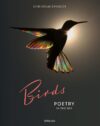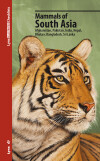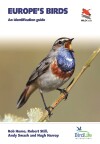The BirdsEye Bird Finding app is already one of the most useful mobile apps for birders, allowing you to access eBird data on-the-go and find birds and hotspots near you. But the BirdsEye team has been steadily improving the app and adding new features. They’ve recently announced the availability of additional sound packages for many regions of the world.
The Sounds
BirdEye has partnered with birdsounds.nl, a company that has produced many highly acclaimed bird sound collections. The collections available in the BirdsEye app are:
- Peru
- Colombia
- Venezuela
- Brazil
- Costa Rica
- Nicaragua
- Northern Siberia
- Sri Lanka
- Australia
- Belgium and Holland
These things are extensive! Costa Rica, for example, includes 2,061 recordings of 764 species (over 15 hours’ worth), while Colombia has 5,500+ recordings of over 1,600 species (46 hours!). Altogether, they average 2-3 sounds per species, but some birds have many more than that if warranted. I’ve barely scratched the surface of all the sounds available, but the ones I’ve listened to sound great.
Using the Sounds
You play the sounds from each bird’s species page. The easiest way to access those is to use the Nearby Birds or Browse All Species functions from the home screen. You can also get to them from the bird lists for each hotspot.
Even with these options, I felt that something was missing. I wanted a way to view and play all of the sounds from a given package, but just the ones from that package. I finally discovered a way to do so. Go back to the Bird Guide Store, tap on a package you’ve purchased, then go to the Bird List. Tapping on the names here will take you to the Species Account page where you can play the sound.
Playing the sounds is very simple – just tap on the speaker icon at the bottom of the species page. That brings up a list of all the sounds for that species across all the packages that you own. Then just tap on the sound that you want to play. Note that if you’ve downloaded the sounds for offline use that the topmost one starts playing automatically when you tap the speaker icon. That could be problematic depending on where you are and what you’re doing (it could potentially scare away a bird), but that’s easy to deal with if you’re prepared for it.
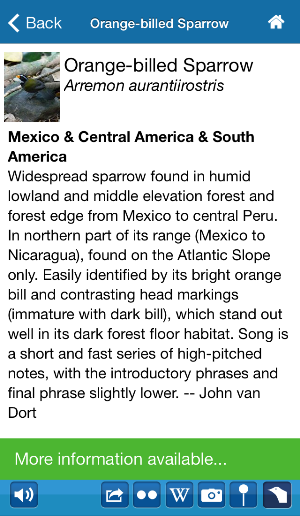
Tapping the speaker icon on the bottom-left of a bird's page...
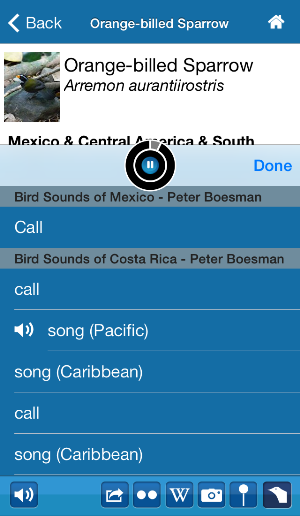
...gives you the sound playback screen in BirdsEye.
This interface is a little too simple for my taste. From the screen you can only switch sounds, pause, or close the list. You cannot skip ahead or backwards within the track or set it to repeat. Also, a progress bar appears when playing, but it would be nice to have the total time and time elapsed displayed as well. Finally, the sounds are labelled as “song” or “call”. Rarely, further information is displayed, like “Pacific” or “Caribbean”, but it would be nice if this was done on a more consistent basis.
Getting the Sounds
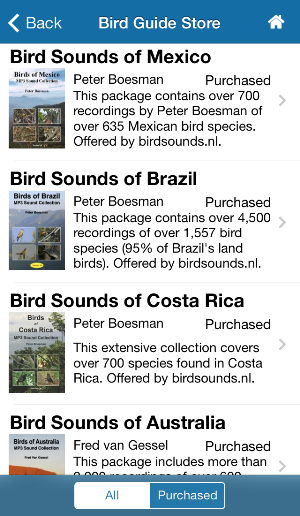 You can purchase the sound packages either from the BirdsEye website or directly in the main BirdsEye app or the BirdsEye North America app (they are not available in the other regional apps) by going to the Bird Guide Store from the app home screen. From there, you can find extensive details on each package, including the list of birds included. Once you purchase the package, the sounds are instantly available within the app over the cloud (provided you’re connected to the internet, of course). Alternatively, you can download the whole package, which I would recommend if you’ll be traveling as you may not always have a reliable network connection. If you later need the space back, you can easily clear the data within the app without worry, because you can download the packages as many times as you want and from any device that you own.
You can purchase the sound packages either from the BirdsEye website or directly in the main BirdsEye app or the BirdsEye North America app (they are not available in the other regional apps) by going to the Bird Guide Store from the app home screen. From there, you can find extensive details on each package, including the list of birds included. Once you purchase the package, the sounds are instantly available within the app over the cloud (provided you’re connected to the internet, of course). Alternatively, you can download the whole package, which I would recommend if you’ll be traveling as you may not always have a reliable network connection. If you later need the space back, you can easily clear the data within the app without worry, because you can download the packages as many times as you want and from any device that you own.
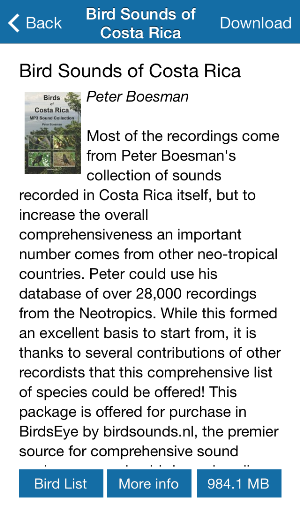
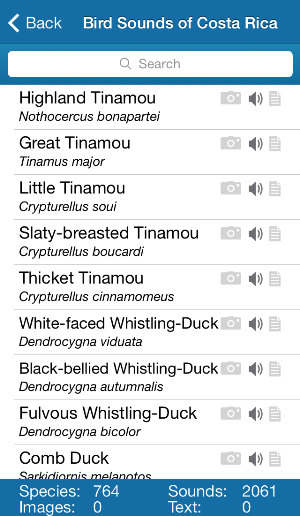
However, there’s one catch. You have the sounds, but you need to be able to access those species in BirdsEye. To do that, you need to have either a membership subscription ($4.99 or $9.99/month) or the appropriate regional app. For instance, if you purchase the Bird Sounds of Peru collection, you need to make sure that you also have access to Peruvian birds either through a membership or purchase of BirdsEye South America. Update: This is not the case. I’ve been informed that when you purchase a sound package, you also get full access and content for those birds in the app.
That’s not very straightforward, but this process is going to be made more user-friendly soon. Shortly, the main BirdsEye app will become free and will give you access to the 50 most common species anywhere you are on the planet. (The newly released Android version of BirdsEye already does this.) Then there will be several options to see more species:
- Purchasing a membership will give you eBird data and BirdsEye content (photos and text where available) for all of the species on Earth as well as unlimited favorite locations
- Purchasing a region will give you eBird data and BirdsEye content for all of the species in that region
- Purchasing a sound pack will give you access to that content, plus eBird data and BirdsEye content for all of those species
These sound packages are a great addition to an already useful app. If you’re going to be birding any of these regions, they’re a great way to have the bird sounds always at your fingertips. I’m sure you don’t need me to tell you how important that is. These packages aren’t cheap ($24.99-$49.49 each), but they’re a good deal considering how many recordings you get. And purchasing them through BirdsEye is actually cheaper than getting them on discs, and much more convenient.
Disclosure: These sound packages were provided by the publisher for review purposes. But the opinion expressed here is my own, it has not been influenced in any way.

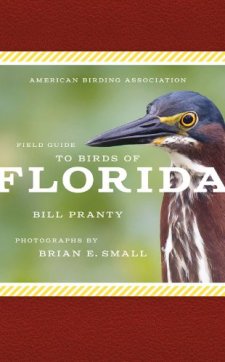 American Birding Association Field Guide to Birds of Florida
American Birding Association Field Guide to Birds of Florida
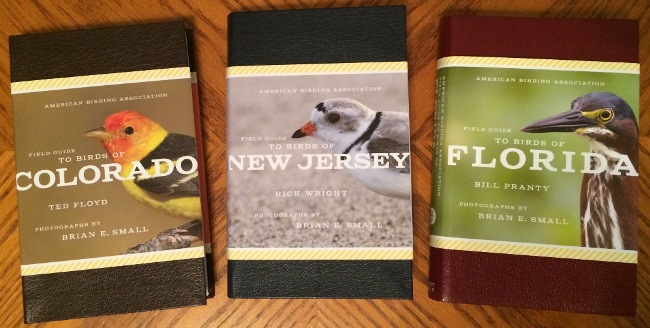


 You can purchase the sound packages either from the
You can purchase the sound packages either from the 

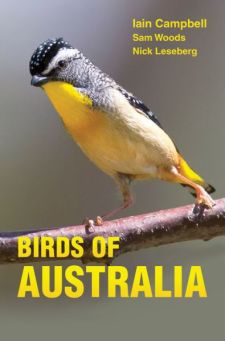 Birds of Australia: A Photographic Guide
Birds of Australia: A Photographic Guide When Eagles Roar: The Amazing Journey of an African Wildlife Adventurer
When Eagles Roar: The Amazing Journey of an African Wildlife Adventurer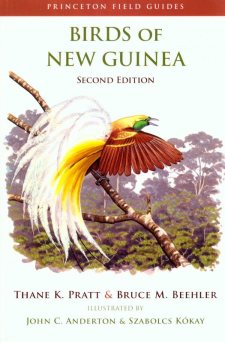 Birds of New Guinea: Second Edition
Birds of New Guinea: Second Edition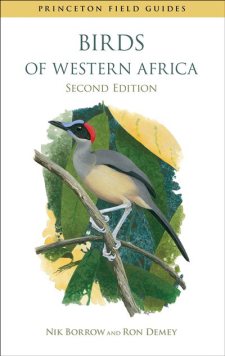 Birds of Western Africa: Second Edition
Birds of Western Africa: Second Edition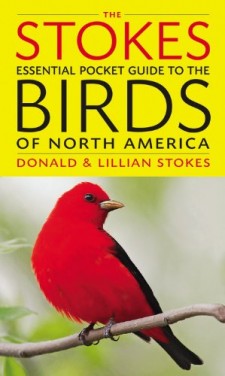 The Stokes Essential Pocket Guide to the Birds of North America
The Stokes Essential Pocket Guide to the Birds of North America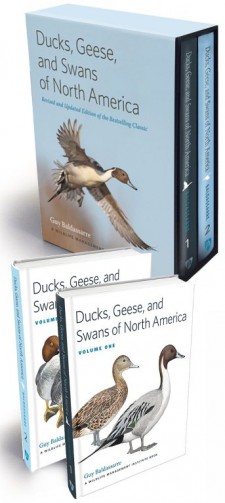 Ducks, Geese, and Swans of North America
Ducks, Geese, and Swans of North America



